
Two by Two
“The task is…not so much to see what no one has yet seen; but to think what nobody has yet thought, about that which everybody sees.”
― Erwin Schrödinger
Just as life is not about what happens to you, but about how you respond to what happens to you, insight is not a function of data, but of how you perceive the data. Plotting data in different ways is illuminating, even fun, and it can lead one to discover stories. And while “stories” often connotes fiction, stories can also be true, and can even create truth.
The best way to predict the future is to make it. And, just as history is the stories we (i.e., the victors) tell ourselves, stories can shape the future by giving people a path, an inspiration, or a goal. One inspiration for those stories is data … and different ways of looking at the data.
Just read the last paragraph and it’s clear I’m insecure re my intellect, or have an edible hangover. The answer is yes.
Anyway, I love 2×2 matrices, and how their quadrants inspire stories. Identifying two factors that define four groups can provide insight into industry dynamics and illuminate pressures and opportunities. Often, the points on a matrix are a function of quantitative analysis; however, the real value is in the sorting, not the calibration.

In that spirit, I’ve been thinking a lot about how tech is battling for our attention. Screens have infested our lives and we’ve become re-attached to an Orwellian umbilical cord. From fitness to dating to news to travel to investing to cooking, every slice of our day is a battleground among tech players for our monetize-able attention. Two factors drive strategy in this battle: the value of the attention that firms command, and the means to monetize that attention. Hence, our A2 matrix.
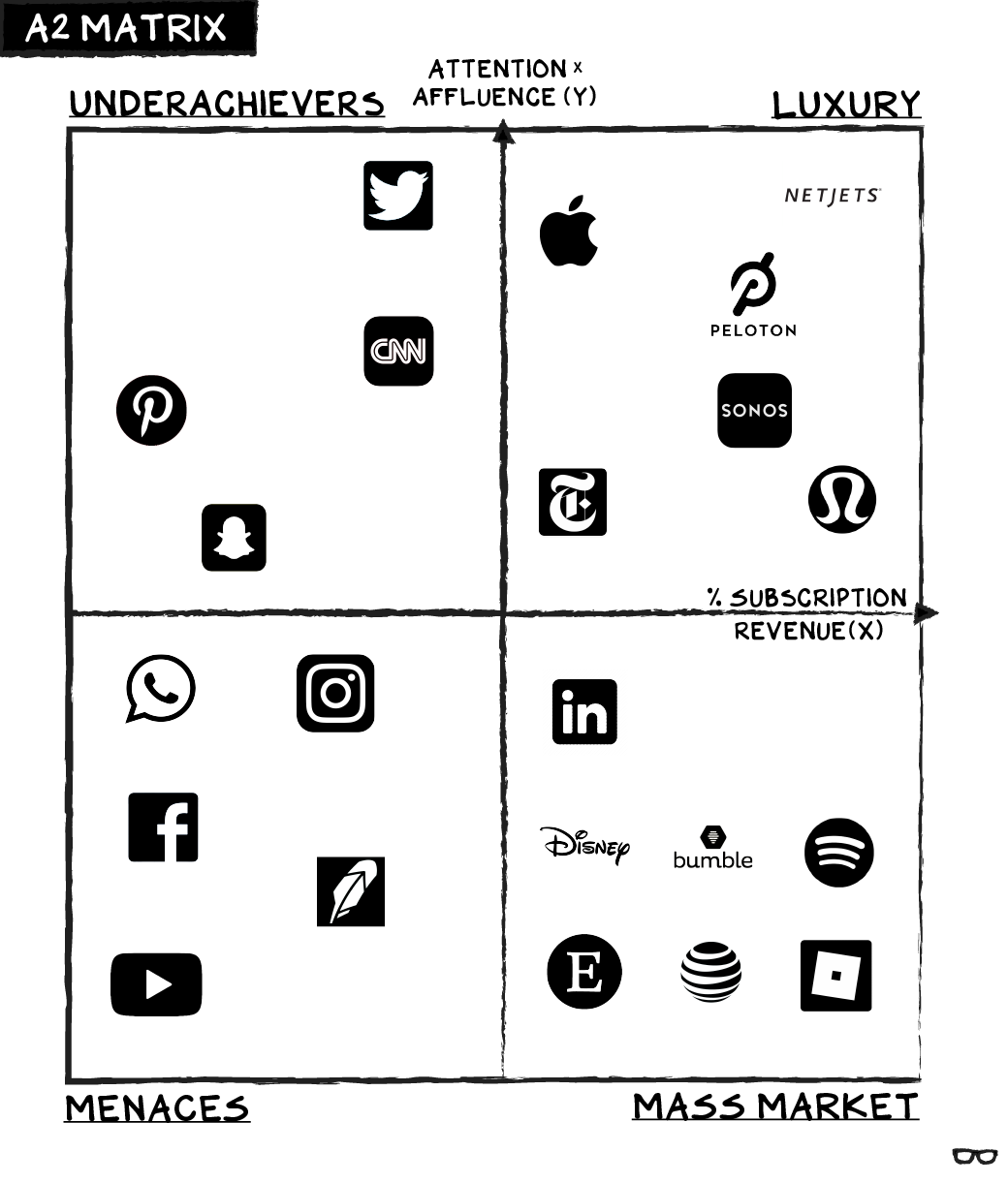
So what are the stories we see when we organize the data along these axes? And can these stories pull the future forward? Let’s start with the upper right “luxury” quadrant.
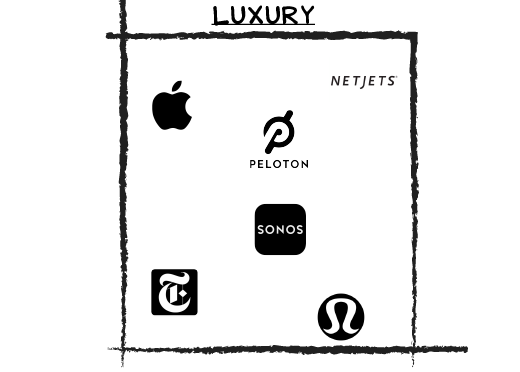
This category includes brands that target consumers willing to pay a premium for products, and for the privacy and status-signalling that comes with premium pricing — primarily user-derived revenue.
This is a great space, but it takes relentless innovation to maintain premium positioning. The strategic imperative for these companies is first to maintain, and then to grow by expanding the attention they capture. Apple, the valedictorian of this space, has been steadily working out from its base in computers to mobile, television, voice, and wearables. The story coming into focus on the page is a move into fitness, and to acquire Peloton.
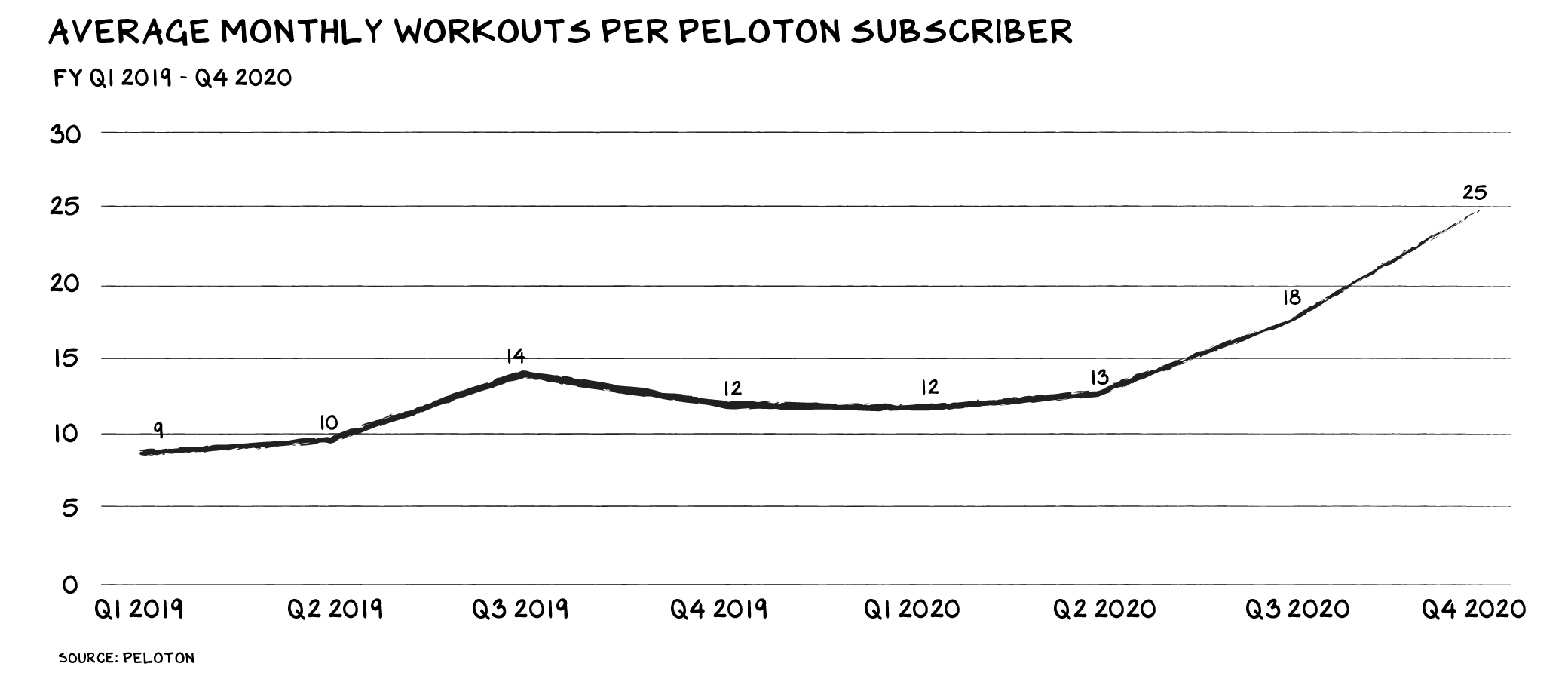
Is Peloton worth $36 billion? As an independent company, in my view, it’s hard to justify. But is an additional two to four hours of attention per week from the most influential people on the planet worth $36 billion to Apple? Yes, in a heartbeat.
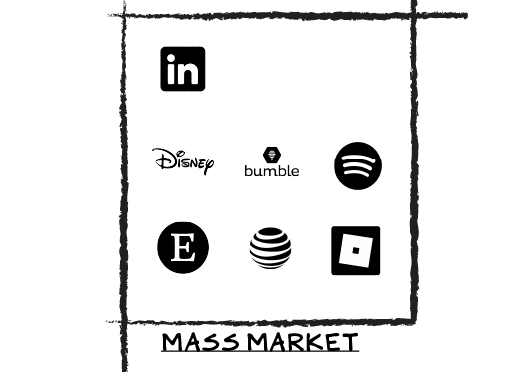
Companies in the Mass Market quadrant also depend primarily on user-derived revenue, but serve a broader consumer base. This is a tough category, because these companies typically lack the insulation provided by an aspirational brand, and therefore face the threat of price competition. This competition can come from another mass market company with greater economies of scale or more efficient technology, or from the quadrant to the left, the Menaces, who don’t need to charge users much (or anything) because they have an alternate revenue stream.
The strategic imperatives, then, are to build scale, increase switching costs, and improve the value proposition. Fortunately, there’s one strategy that addresses all three: the rundle. A recurring revenue bundle should be the backbone of all these companies.
Most of these businesses already offer subscriptions, and are buttressing their offerings as they hear the footsteps of the Menaces whose attention may supersede the regulatory hurdles or infrastructure the mass has put in place. Think of Whatsapp challenging Vodafone. Spotify is moving aggressively beyond music into podcasts, and probably beyond. Verizon is incorporating content into its wireless plans, offering Disney+ as an option.
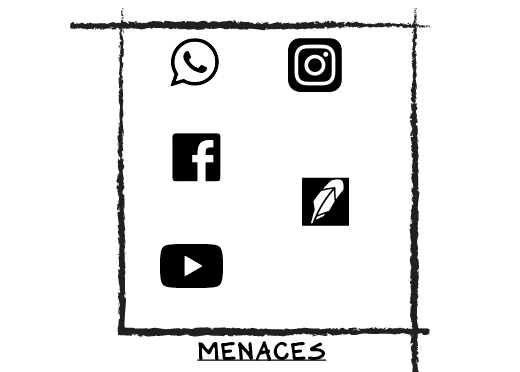
Companies in the Menaces quadrant give away their service for free in order to accumulate massive scale and monetize the attention of their users. Typically, these companies scale with breakthrough product innovation, but once they secure market power, they direct their innovative energy into protecting their turf and exploiting users for the benefit of their true customers: the advertisers or brokers who pay for order flow.
Once scale is achieved, these businesses are incredibly profitable and can make the jump to lightspeed, where network effects stave off competitive pressure. Their only real threat: government regulation. So, the strategic imperative becomes to overwhelm Washington with lobbyists and public relations professionals that in turn overwhelm DC and the media. There are several-fold more people working in PR at Facebook, smearing lipstick on cancer, than there are journalists (globally) covering tech.
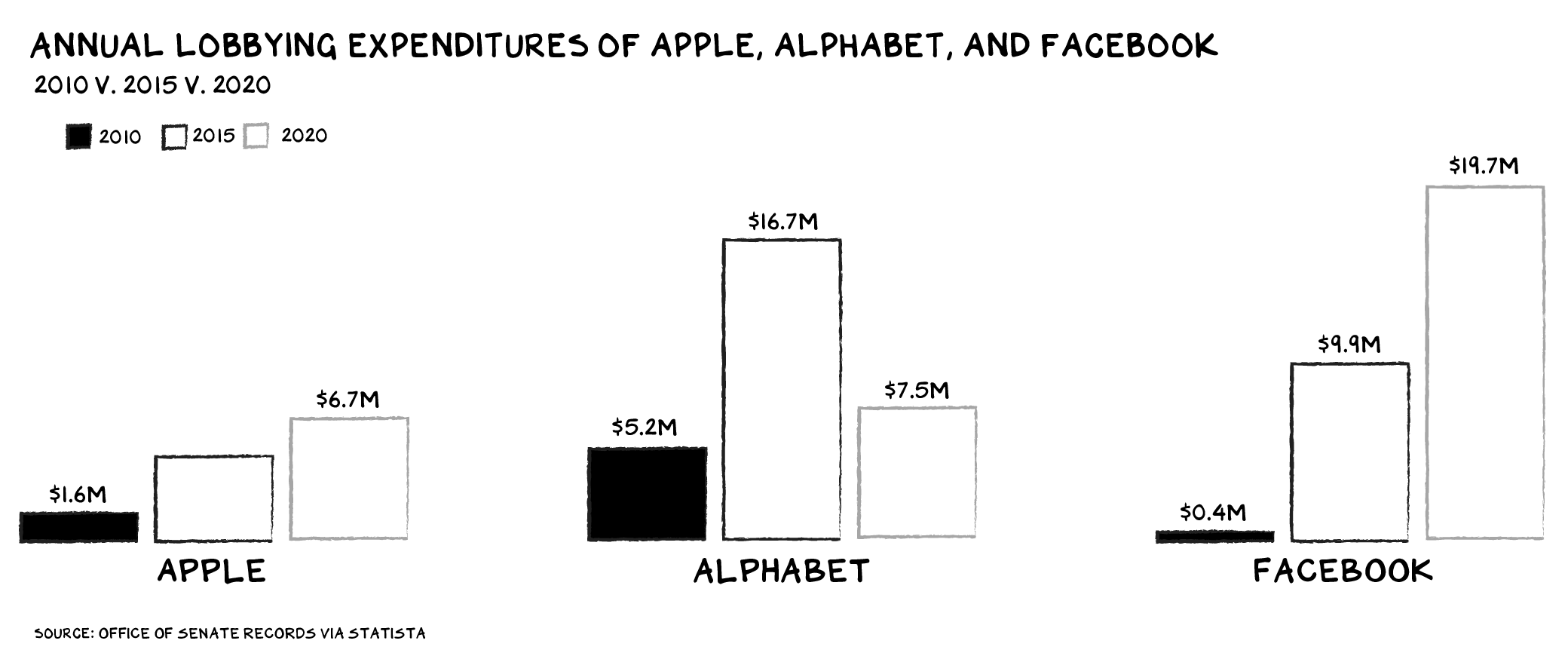
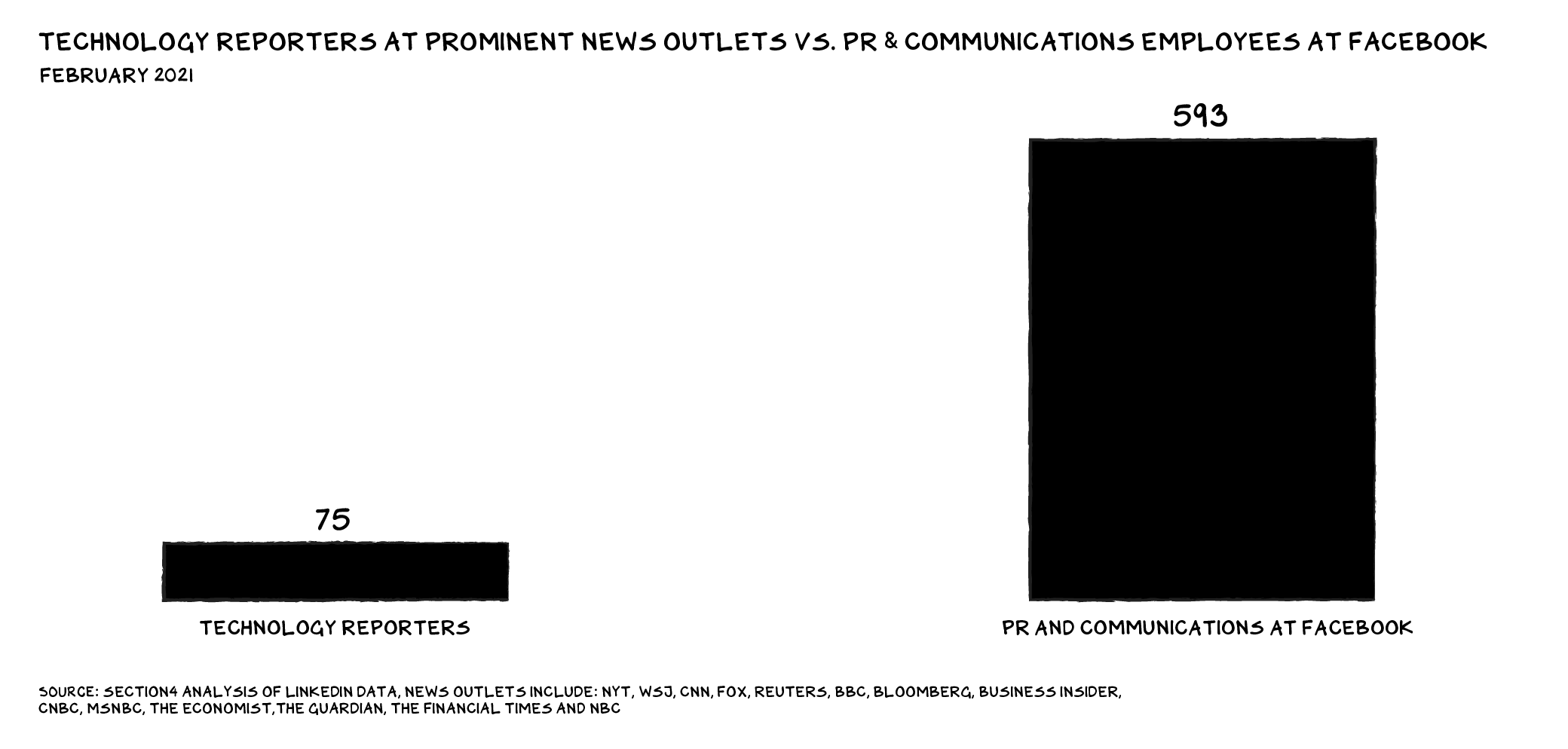
This is a business of scale, and of sociopathy. Regulators would be wise to hire economists, antitrust experts, and behavioral scientists to understand this quadrant better. Similar to climate change, it’s an emergent problem of long-ignored externalities, and those who benefit from our blindness have politicized expressions of concern and positioned them as hysterical, socialist, and (worse) European.
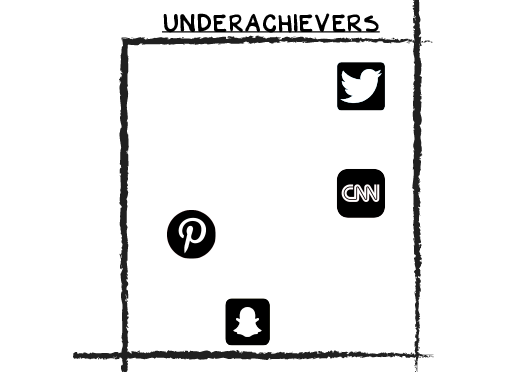
The last quadrant contains the Underachievers. These firms are doing something right — they capture a great deal of time from affluent users — but leave surplus value on the table. In sum, they are not commanding the space they occupy. It’s hard to maintain a premium position when you are exploiting your users. It’s like jumping Double Dutch while studying English. CNN offers a great product and enjoys affluent/influential viewers … but so did the “Tiffany” network (CBS), until HBO and Netflix came along and offered viewers the chance to pay with money rather than time spent discovering that they likely had opioid-induced constipation. (Sidenote: Rush Limbaugh 1951-2021.) The challenge for these companies is to rally the leadership and capital needed to traverse quadrants into the Luxury space.
It can be done, and the New York Times is proof. As an ad-driven business, clinging to the wrong stakeholder (advertisers) in a declining industry, the share price plunged from $50 to $3 in five years. When it moved into the Luxury quadrant, via a renewed emphasis on subscriptions, it became one of the most durable brands in media. Prediction: The gray lady will outlive Facebook and Google. The firm’s stock price has increased 8x since 2012.
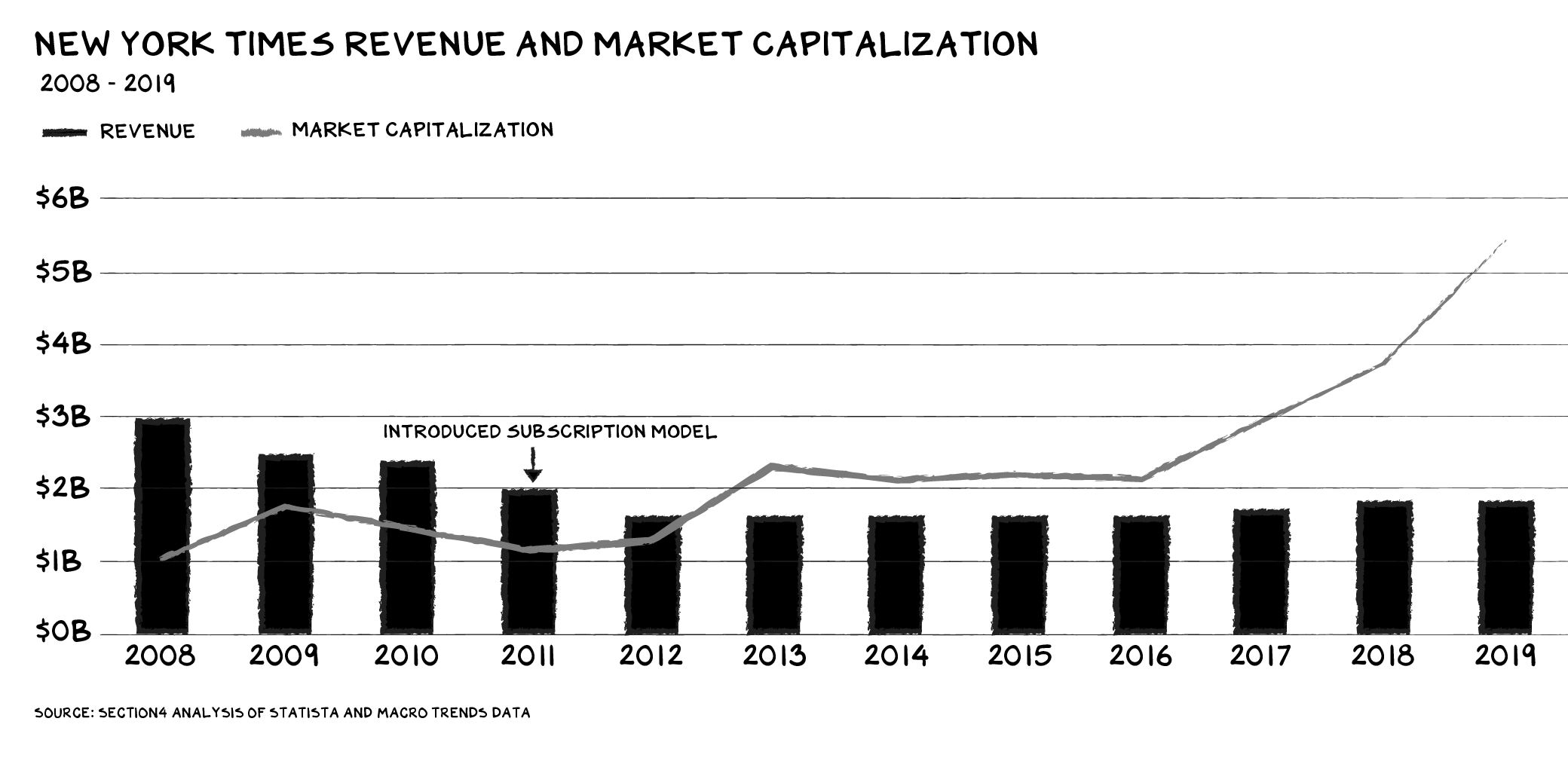
Clubhouse is attempting to traverse quadrants with a move to a subscription model, which is smart. I have never been on the Clubhouse app. However, if we introduced a “Douchebag” axis to our model, the voice-conversation app would occupy its own quadrant.
The Hard Thing
It can be illuminating to take a step back and consider an industry along a few key dimensions. We leverage data to construct a lens that informs our decision making. However, this is just the first step. Implementing change is harder … and why the potential returns are so great. Management teams that use these insights and embrace the difficult — and dangerous — work of traversing the crevasses between quadrants require a CEO who does not give into the temptation to just ride it out, collect his/her $30-50 million, and move to West Palm Beach. The future belongs to the bold: the storytellers who can act on their stories and pull the future forward.
Speaking of stories, I’ve been telling one about Twitter for some time now. The company needs to move into the Luxury quadrant with a (partial) subscription model, premium features, and proprietary content. Over the past few months, Twitter has publicly adopted this strategy, and registered a 100 percent increase in share price. But now comes the hard part: moving from lip-synching this blog to product development … we’ll see.
Here’s another story we see: Goldman Sachs is the most undervalued brand in business and will attract an activist investor who will push for a rundle and verticalization. I begin to tell that story on today’s episode of Pivot, stay tuned, my brothers and sisters: Like a mastiff, I’m hungry for a lion. I’m not sure what the last sentence means, but it makes me feel 40 again. And that’s enough.
Life is so rich,

Bonus content on Pivot today: Kara compares getting the Covid-19 vaccine to using Tinder, and we talk GameStop, Texas, and Great Danes.
P.S. I’ve got a side hustle (#fakemillennial). In 2019, I founded Section4 with the intention of lowering the barriers to receiving an elite business education: letters of recommendation, the GMAT, the time away from work, and the cost. We’re addressing these barriers with Section4 Sprints – 2-3 week intensive courses taught by the best professors from top MBA programs. Next up from Section4 is NYU Stern Professor Adam Alter’s “Principles of Winning Products.” Registration opens in the first week of March, sign up for early access now.
36 Comments
Need more Scott in your life?
The Prof G Markets Pod now has a newsletter edition. Sign up here to receive it every Monday. What a thrill.


My colleague is an asshole and makes me look like an asshole in front of our students.
Heard you and Kara on Pivot talking about Alabama. Come on down to Huntsville! It will be one of your predictions!
This is nonsense. Basically put all Facebook brands in the bottom left because you own Twitter stock. How can Twitter + FB not be in the same quadrant? They’ve got exactly the same business model (for now) and both have all the issues which come with social media.
makes sense
Is Disney is the correct space? With Disney+ (subscriptions) I would place the company is the Luxury quadrant. They traversed the gap.
They just started with that, but true that with the pricing of premieres they are pulling up. I also questioned the positioning of Disney, but more on a brand-attributes level: Disney is indeed “mass”, but it’s also aspirational and very strong.
Brilliant observation regarding Clubhouse
Such a powerful comment… The best way to predict the future is to make it. And, just as history is the stories we (i.e., the victors) tell ourselves
I may have missed this but how exactly is attention being measured here?
Wish you would have been around when I got my MBA at NYU! Marketing….what dreamers we were!
The advertising “load” of the NyTimes is a bounty that must be paid. It is a turnstyle that has a hidden and onerous psychic cost.
Love this. So true about Clubhouse. Any wonder they only share download or reg #s and not deactivation ones? So hard to deactivate too. Have to email multiple times and wait. Anyway Twitter’s been pushing Periscope via Spaces. Much better than Clubhouse.
“Douchebag” axis to be discussed in part 2
You are a joy and a ballast, Prof. g
Thoroughly delightful!
what is the quill(?) logo in the menace quadrant?
Robinhood
Don’t think you should leave Amazon off this- and they would be in two, if not three quadrants. I’m going with threes a menace that bridges luxury and mass market!
Everything flows through them, right? If they have a higher level “Ultra Prime” subscription, they’ll be firmly in the luxury category. Selling things cheaper than you can get anywhere else is definitely a menace. They are pretty high on the “Douchebag” Z-axis axis as well.
Wish my knowledge of high-flying stocks’ logos was better so I didn’t have to confirm which belong to which companies.
You are the best, Prof G. Thank you for sharing your wisdom with us.
I’ve long thought that Twitter would be the perfect player to develop a pay per view platform for news articles and other content. Charge me a nickel to read a story-keep a penny and send 4 cents to the originator. I just can’t subscribe to everything I read. I subscribe to the NY Times, but I’d gladly pay a nickel to read a story from the Miami Herald that I linked to from Twitter. Jack could even run the payments through Square.
was thinking the same. Twitter can charge me $10 a month or the 10cents a story behind paywall. It can be THE source for news.
@James That’s Blendle. (Hot take: It’s private and Twitter should buy it.)
Am I miss reading the vertical axis “attention /affluence”, because in my mind they are two quite different metrics? It’s only important because I think your stories break down – as I’m not sure Apple commands more “attention” than Instagram or FB, and certainly Peloton, Sonos & Lululemon don’t. And isn’t that the problem – FB, Instagram, YouTube & TikTok command too much attention? Change “attention” for “personally value” (or some similar metric) and it might make sense….but perhaps only if you’re an affluent white guy (I am one too).
hi simon, i had this doubt too!
i think its the attention of affluent people, the ones who are willing to pay more to specific things.. fb, ig, tik tok has a lot of atttention, but if theses companies tried do charge some fee from theirs users, they will churn.. diferent from apple, peloton & new business model from nyt
When faced with delusional journalists… P re-packaged pre-determined facts all hope isn’t lost .
I could be wrong but aren’t 2×2 matrices for showing opposing factors on a scale. Like luxury vs mass market makes sense. But underachievers vs menaces doesn’t make sense, menaces is just made up because you don’t like those brands?
As always, thought-provoking, but I wish you’d included Tik-Tok on your quadrant (and commented on that company!)
I consider The New York Times a necessity not a luxury.
Maybe NYT Cooking falls into this category–it sure does for me!
I understand the benefits of a rundle to companies. Autocad, Microsoft et al. all want to sell subscriptions. But from a individual’s POV, it is not always clear that subscriptions create more value for them. Do I lease cars? No. I buy and run the damn thing into the ground for 20 years or more (which is possible for a Toyota or Honda). Do I rent? No, I buy a house and fix it up to create long term value and help fight off inflation. So for me, although I prefer Apple’s privacy model, as a consumer, I try to stay out of Apple’s (and others) luxury spaces and save the money for something more important. Like retirement.
What numbers / assumptions are you using for the FB PR / Tech journalist ratio because that doesn’t seem plausible…
I felt great. Then I read what you wrote. Now I have a migraine
Useful comment….